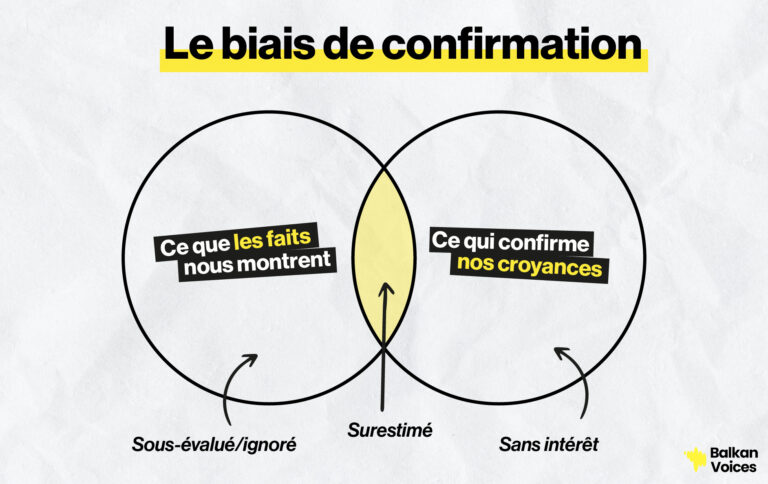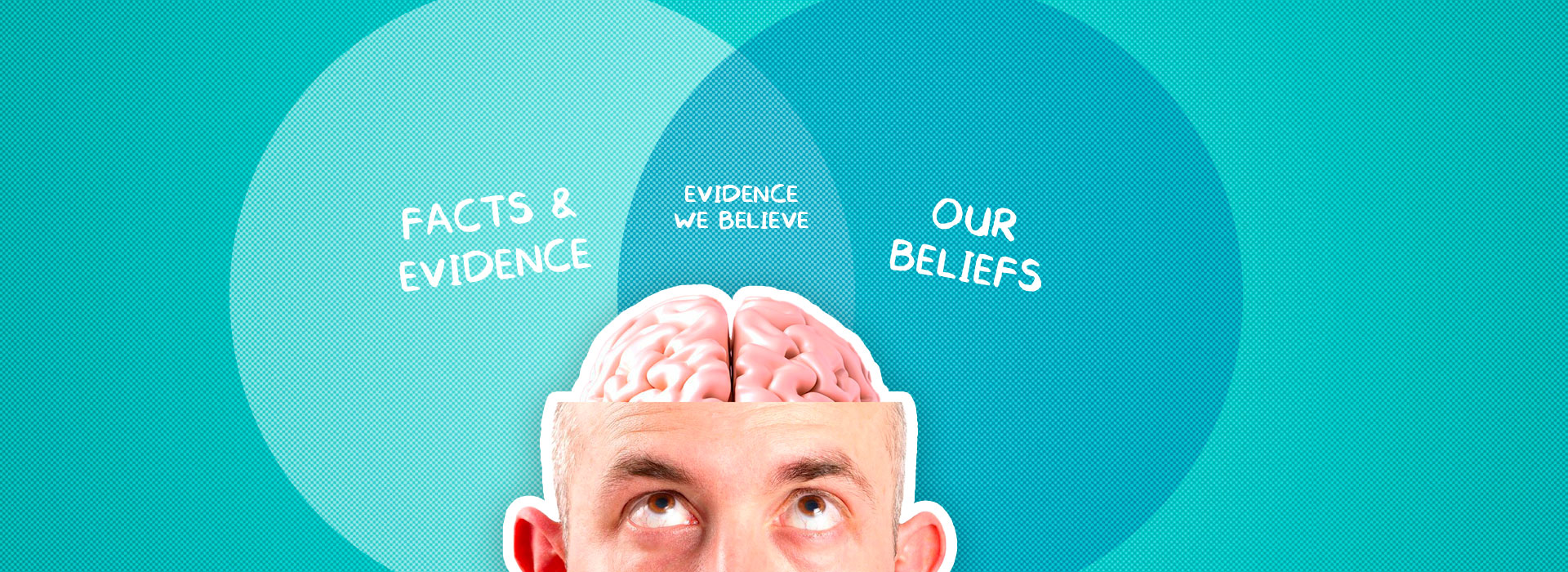1- What is confirmation bias?
Have you ever noticed that you always find evidence to confirm what you already believe? It’s no coincidence, it’s confirmation bias in action!
Confirmation bias is a cognitive bias that involves searching for, interpreting, and remembering information in a way that confirms our pre-existing beliefs, while minimizing or ignoring information that contradicts them.

This bias pushes us to favor information that reinforces our values, our way of life, etc. We therefore reject information that goes against our beliefs much more quickly and easily. In short, we want to know what we already know.
This excerpt from the video “If Google was a guy” perfectly illustrates this bias!
Translation: “Vaccines cause autism – Well, I have a million results that say no, and only one result that says yes – I knew it!”
2- Why are we inclined to believe fake news?
Our brains are naturally inclined to adopt mental shortcuts to process information quickly. Confirmation bias is a typical example, causing us to prioritize information that supports our opinions and reject information that challenges them. This mechanism is universal and does not reflect a lack of intelligence, but rather a natural human tendency.
3- The role of confirmation bias in the spread of fake news
The confirmation bias plays a crucial role in the spread of fake news. The creators of these misleading pieces of information often design them to resonate with the pre-existing beliefs of their target audience, thus making them easier to accept and share.
Example: A person opposed to immigration is more likely to believe and share a false news story claiming that an immigrant committed a crime, without seeking to verify the accuracy of the information.
A few examples:
Conspiracy theories about vaccines: Baseless rumors circulate claiming that vaccines are ineffective or dangerous. Individuals opposed to vaccination may ignore scientific evidence and instead focus on anecdotes or unverified sources that support their position.
Biased information about ethnic groups: Due to the complex history of the Balkans, for example, some people may be inclined to believe negative stereotypes about other ethnic groups, relying on stories or information that confirm their prejudices while ignoring positive examples or contradictory data.
Musical and cultural preferences: A young person favoring a certain musical genre may seek out positive reviews of their favorite artists and avoid or discredit negative critiques, thus reinforcing their conviction that their choices are the best.
4- The Bubble Effect and Algorithms
Confirmation bias is reinforced by our social and digital environment. We tend to surround ourselves with people who share similar opinions, thus creating an “information bubble” where our beliefs are constantly reinforced.
Social media algorithms amplify this phenomenon by primarily showing us content aligned with our preferences and filtering out contradictory information. They collect your data (beliefs, tastes, interests, friends, location, date of birth, gender, etc.) and sort the content and advertisements suggested to you. This limits our exposure to divergent perspectives and reinforces our initial convictions.
📌 Example: YouTube recommends videos based on your previous viewings. A person who watches skeptical videos about climate change will receive more and more content denying the reality of global warming, thereby reinforcing their confirmation bias.
5- How to bypass confirmation bias
To mitigate the influence of confirmation bias, it is essential to develop conscious strategies:
– Acknowledge the existence of the bias: Admit that we are all subject to confirmation bias as the first step to overcoming it.
– Cultivate doubt: Question information, even if it supports our beliefs, and actively seek out contradictory sources.
– Diversify your sources of information: Consult media with varied perspectives, including those we don’t necessarily agree with, to gain a more complete view of issues.
– Give weight to information that contradicts our beliefs: Take the time to analyze and understand information that challenges our opinions, as it can enrich our understanding and reduce bias.
📌 Practical exercise: Try reading a serious article that goes against one of your convictions and analyze it with an open mind. How do you feel? Do you instinctively want to reject it? Why?
By becoming aware of confirmation bias and adopting these reflexes, we can improve our critical thinking and avoid falling into the traps of misinformation.






